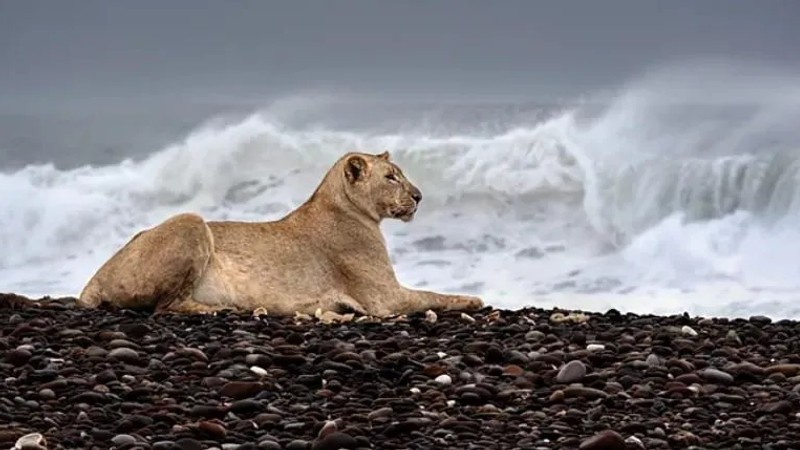Along Namibia’s wild Skeleton Coast, a small pride of lions has rewritten the rules of survival.
These are the world’s only maritime lions, predators that have traded the savannah for sand dunes and the Atlantic surf.
Here, among crashing waves and mist, they have learned to hunt seals to survive.
Belgian photographer Griet Van Malderen captured this astonishing adaptation in a now-famous image of Gamma, a lioness standing guard over a Cape fur seal carcass as stormy waves churn behind her.
The photo, taken after days of patient observation, earned a highly commended award in the Wildlife Photographer of the Year competition run by London’s Natural History Museum.
“She was guarding the seal all day,” Van Malderen recalls. “It’s really amazing to see how their behaviour is starting to change.”
Only about 80 desert lions remain in Namibia, with a dozen now living along the Skeleton Coast.
These resilient big cats were once driven inland in the 1980s after drought and conflict with farmers decimated their numbers. Decades later, they’ve returned to the coast – not out of choice, but necessity.
According to Dr Philip Stander, founder of the Desert Lion Conservation Trust, these lions endure one of the harshest environments on Earth – “a huge sea of sand dunes, with no vegetation.”
Yet they’ve evolved to thrive here, travelling vast distances across home ranges of up to 12,000 square kilometres, and surviving almost entirely on the moisture from their prey.
When inland food sources like oryx and springbok dwindled in 2015, the lions turned to the ocean.
“The seals were a blessing,” says Van Malderen. “Climate change has pushed these desert lions to the edge, forcing them to adapt in extraordinary ways.”
Gamma, now three-and-a-half years old, represents the first generation of lions born and raised on the Skeleton Coast and is capable of hunting as many as 40 seals in a single night.
New cubs born earlier this year suggest the population could grow, but coexistence with humans remains a challenge.
Local rangers use fireworks and virtual fences to prevent conflict with coastal communities.
As Van Malderen puts it: “The photo shows how resilient these animals are… that they change their habitat to survive.”On this haunting coastline, survival has meant becoming something entirely new – a lion of the sea.
News
